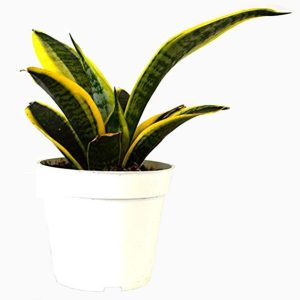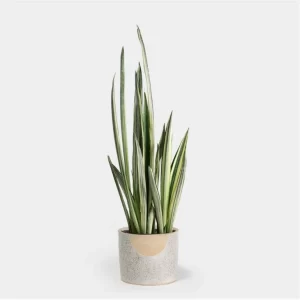Many people’s first pick of indoor plants is Dracaena Arborea because of its distinctive look and great adaptation. Apart from its outward beauty, this plant represents persistence and longevity. Nonetheless, the secret to guarantee the good development of Dracaena is the right watering frequency. Though Dracaena is regarded as a somewhat low-maintenance plant, watering calls for some knowledge and expertise.

Dracaena
Water needs of Dracaena Arborea and ecological practices
First you must grasp the basic biological behaviors of Dracaena in order to know how to water it properly. Usually growing in arid temperatures and poor soil conditions, dracaena is native in tropical and subtropical areas. Its extensive root system and thick leaves help it to retain and utilize water in dry surroundings. This tendency of development indicates that Dracaena requires less water than other plants.
Dracaena Arborea has acquired great drought tolerance as rainfall is rarely prevalent in their natural habitat. This flexibility makes Dracaena not demanding water in house upkeep. Root rot and plant health risk are brought about by overwatering. Thus, the secret to guarantee the good development of dragon blood trees is to know how to master the proper watering frequency.
Timing of watering and soil state judgment
Maintenance of dragon blood trees depends much on time of watering. Dragon blood trees are better suited for watering after the ground is dry than certain other plants that need regular irrigation. This not only helps the plant root system to grow and increases its drought resilience but also keeps the root system from becoming long-saturated in water.
Observing the condition of the soil will help one determine if it needs water. Usually, the soil is ready for the next watering when its surface seems dry and feels light. Should the ground remain wet, it is advised to wait some time before watering. Effective methods to determine the dryness and wetness of the soil include touching it or inserting it into the ground using a wooden stick. This will help to find any associated moist dirt.
Furthermore a clue on when to water is the condition of the dragon blood tree’s leaves. Should the leaves have yellow or withered appearance, the plant can be missing water. On the other hand, dark stains on the leaves or softness of them might indicate overwatering. Observing the condition of the soil and leaves helps you to more precisely estimate the time of watering and prevent compromising the health of the plant by either too or too little watering.
Seasonal variations and frequency of irrigation adjustment
The watering frequency of the dragon blood tree directly changes with the seasons. The dragon blood tree grows more actively in warm seasons and there is quite high water need. In this situation, you may have to examine the soil status more often to guarantee it is not very dry. The air humidity is often low and the water evaporates fast in the summer when the temperature is high. The dragon blood tree may keep in a healthy growing condition by somewhat increasing the frequency of watering.
Conversely, in cold seasons—particularly in winter—the need for water also declines and the dragon blood tree’s growth rate slows down. You should decrease the frequency of watering at this point to prevent water accumulating damaging the plant’s root system. Maintaining a somewhat dry ground helps the dragon blood tree better adapt to the winter growing environment as the evaporation rate of water is sluggish in a cold surroundings.
It is interesting to note that the dragon blood tree requires some humidity to sustain its fundamental physiological activity even in winter. You should hence not cease watering entirely but rather replace the water in time depending on the dryness of the soil. Seasonally varying the watering frequency will assist the dragon blood tree to respond to environmental changes and preserve its good development.
The link of air humidity and irrigation
Highly sensitive to air humidity, dragon blood trees will also alter in water need depending on ambient humidity. In a high humidity environment, water evaporates slowly and the plant has quite little need for it. Watering should be cut down at this point to prevent dirt from accumulating and root rot might result.
On the other hand, in a dry environment—especially in winter or in an air-conditioned room—the air humidity is usually low, water evaporates rapidly, and the plant may run short. Apart from suitably increasing the frequency of watering, one may use water basins around the plant or a humidifier to raise air humidity and help one to deal with this condition. These steps may maintain the leaves glossy and healthy and enable the dragon blood tree to better fit the arid surroundings.
Important strategies for maintaining the health of the dragon blood tree include routinely examining its leaves and soil condition and modifying the watering frequency based on variations in air humidity. This helps you to provide the dragon blood tree with a more appropriate growing environment and guarantee its ability to flourish under various humidity levels.
Watering strategies and approaches
Apart from the frequency of watering, the right watering technique is also crucial to guarantee the good development of dragon blood trees. Mild water is advised for watering; avoid using too cold or too hot water as excessive temperatures may aggravate the root system of the plant and influence its natural absorption capacity.
Particularly in the hot summer, direct sunlight may burn the foliage via the concentrating action of water droplets; so, try to avoid watering the dragon blood tree directly on the leaves. To guarantee that the water may permeate uniformly across the root system, water should therefore be gently put into the soil. Furthermore, loose soil and well-drained flower pots help to significantly minimize water collection and lessen the root rot frequency.
Should your dragon blood tree be housed in a container devoid of drainage holes, it is advised to empty extra water after every watering to avoid water building at the bottom of the pot. After watering, a flower container with drainage capability will enable the plant to better adjust to the humid surroundings and encourage the good development of the root system.
Perfect the method of watering the dragon blood tree
The dragon blood tree’s healthy development depends mostly on frequency and technique of watering. Understanding the ecological behaviors of the dragon blood tree, evaluating the soil condition, seasonal changes and the effect of air humidity helps one to better comprehend the time and frequency of watering. Pay close attention to prevent overwatering and long-term dryness throughout the maintenance procedure so the plant may flourish in an appropriate surroundings.

Dracaena Arborea
Learning the right watering methods not only helps the dragon blood tree to remain green but also extends its growing life, thereby creating a lovely inside scene. The dragon blood tree may provide some natural beauty and freshness to your life whether you live at home or at the workplace. With the help of this post, I hope you will be more boldly able to take care of your dragon blood tree in future maintenance so that it may radiate with health under your careful attention.
Post time: 08-31-2024




